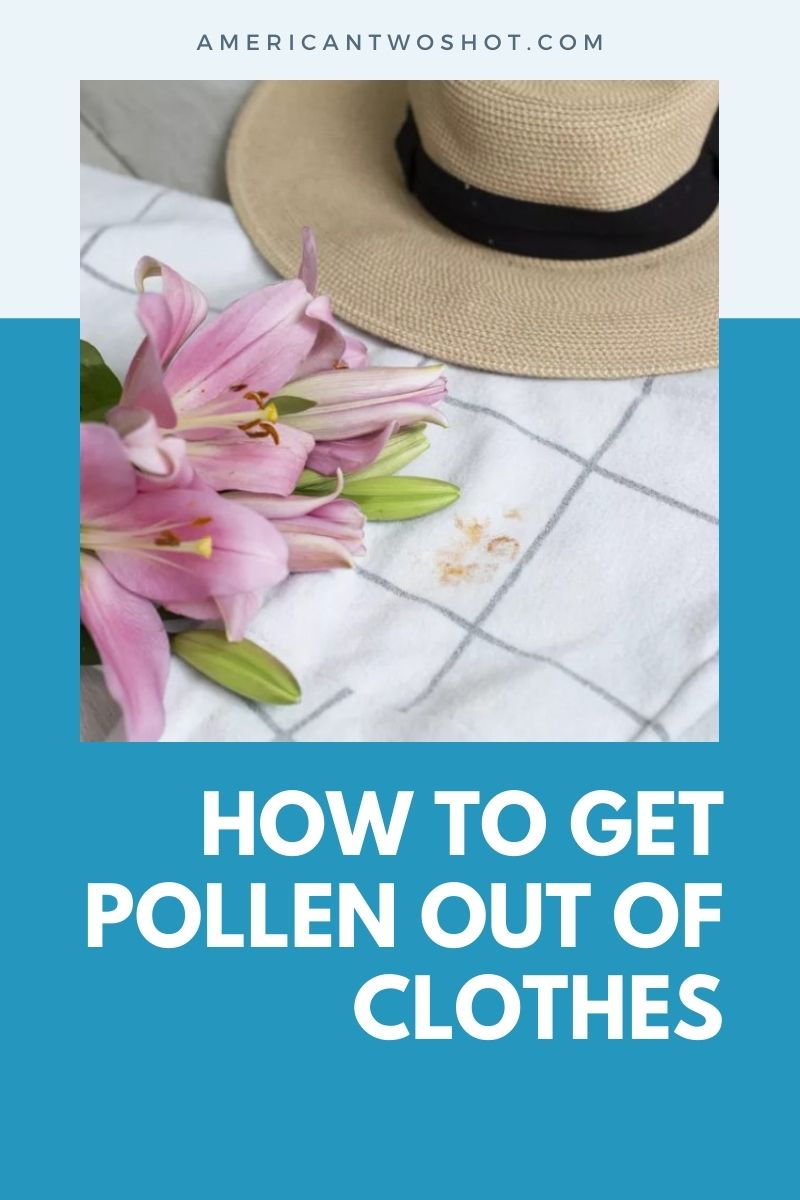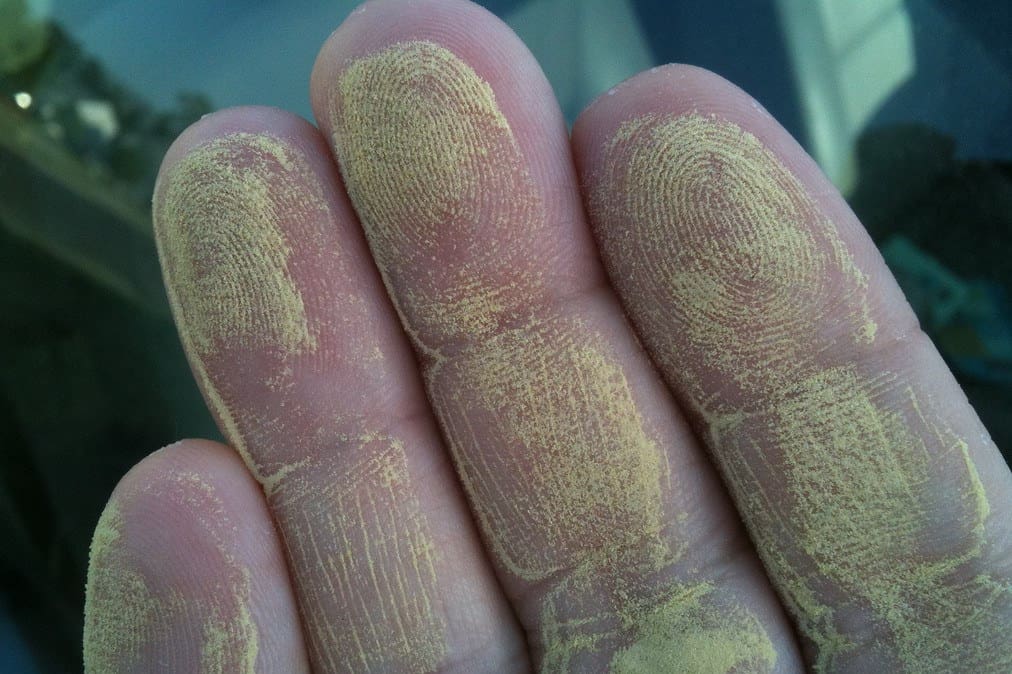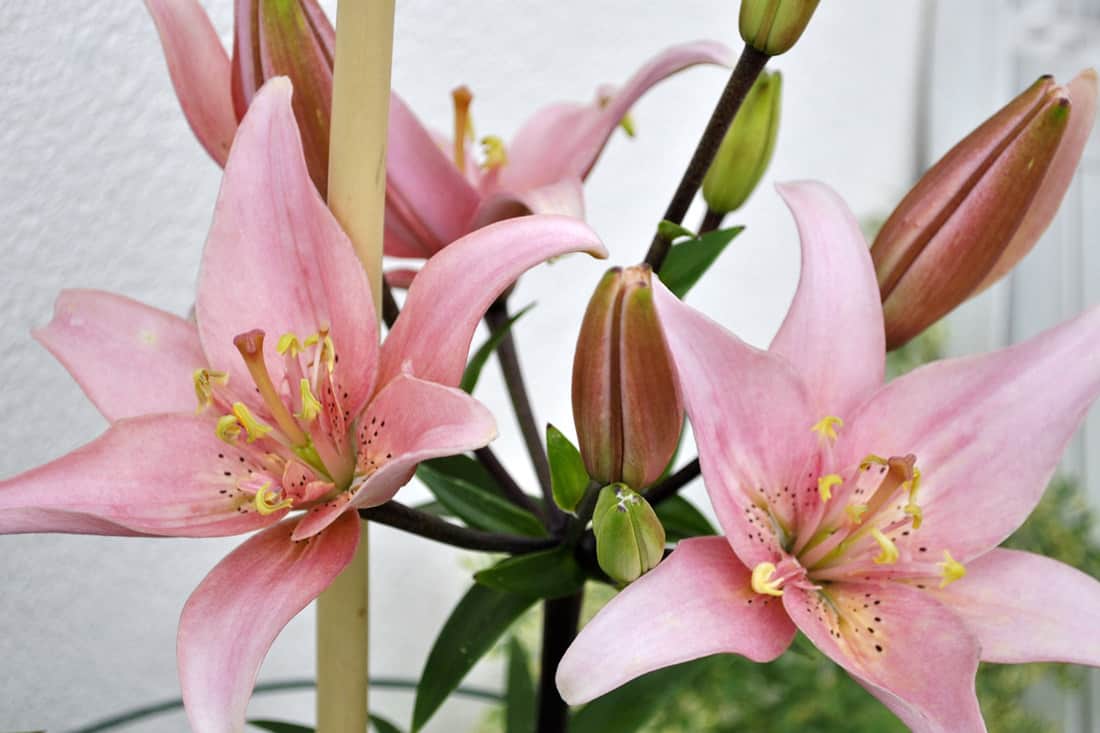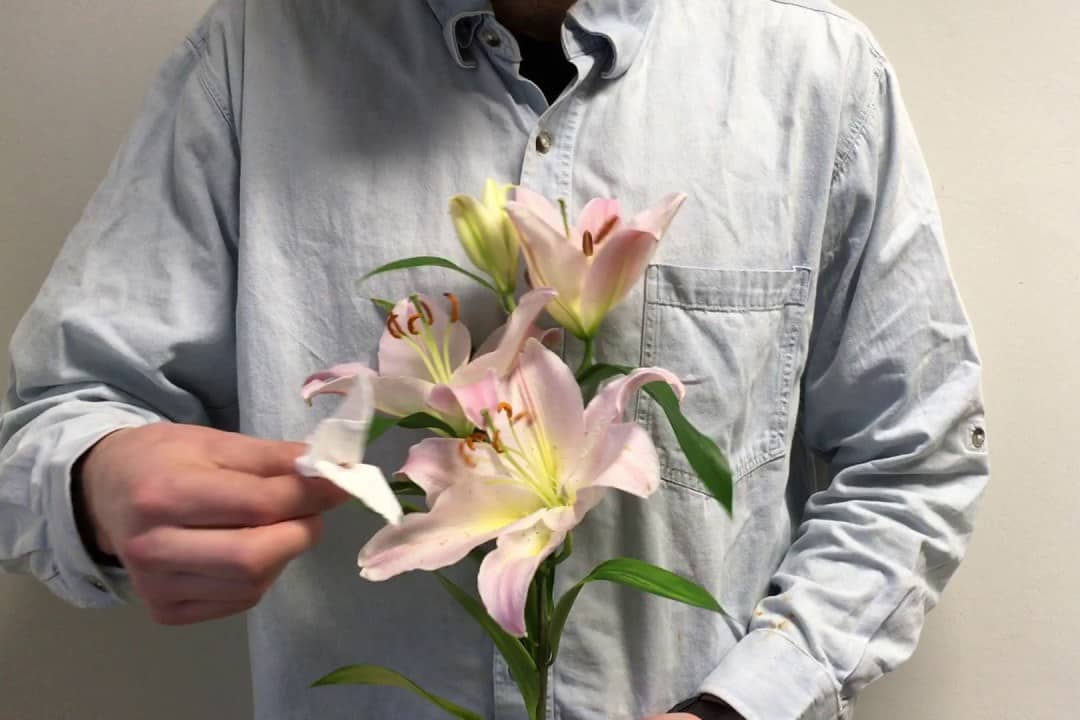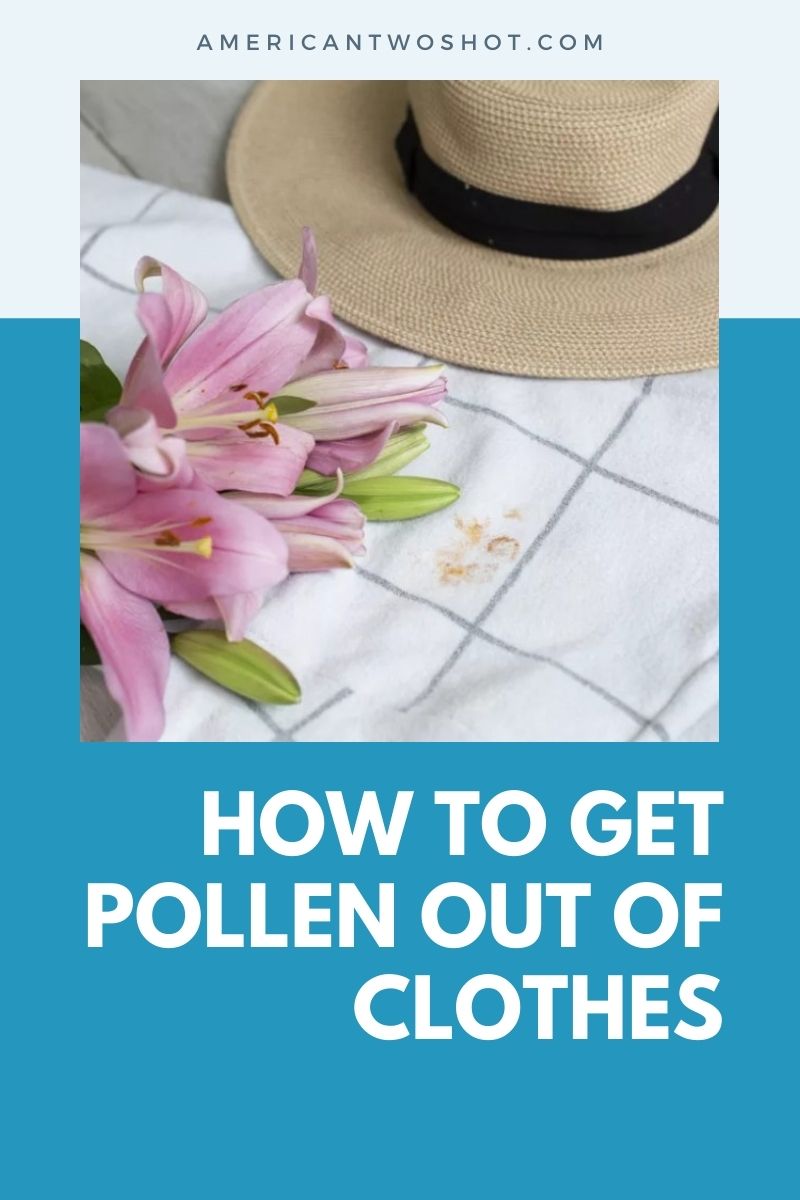Adding flowers to the home is a lovely idea, but their pollens can easily be transferred to your clothing. Unlike stains caused by liquids like oil or grease, pollen stains are caused by the fine powder found in flowers and other plants. Find out how to remove pollen stains and prevent getting pollen stains with our step-by-step guide.
What causes pollen stains?
Floral vase flowers may be attractive to look at, but their pollen may not be. Natural dyes in this pollen are extremely difficult to remove. he pollen from Fuschia and Delphinium is water-soluble, so it can be washed away easily.
In the case of lilies, which have fat-soluble pigments, additional methods will be necessary to remove them. Lily pollens will permanently stain fabric fibers without proper cleaning techniques.
How to get rid of pollen stains from clothes?
Remove any visible pollen with a piece of sticky tape before using any cleaning chemicals or mixes. It is possible to remove pollen from your clothes by following these simple steps.
Step 1. Shake the pollen off
Outside, use a shaker to get rid of as much pollen as possible from the stained item, avoid spreading pollen to other parts of the clothing, keep the discolored area facing down.
Step 2. Tape the Pollen to the Surface
You can use masking tape to lift pollen off the surface by gently pressing it against the stain with sticky-side-out tape wrapped around a few fingers. The tape will bring the pollen to the surface. Get rid of as much pollen as you can increase your chances of removing the stain altogether. If the pollen has already been rubbed into the garment, this method is usually more successful than shaking.
Step 3. Cold Water Rinse and Soak
To remove the stain, use cold water to wash the fabric from the backside. This method helps to push the pollen out of the fabric. Once the item has been rinsed, immerse it for 30 minutes in a washtub or sink full of cold water.
Step 4. Repeat the Rinse.
Flush the water through the fabric from the back of the stain to push pollen out of the front. Always rinse thoroughly, as you’re removing more of the discoloration with each subsequent rinse. To remove as much pollen stain as possible, soak and rinse the garment repeatedly.
Step 5. Get rid of stains by using a stain remover.
Before washing, use a stain remover of your choice. As instructed, allow it to sit for 10 minutes or so.
Step 6. Use hot water.
Wash the garments using the hottest water possible. The stain remover will work better in hot water2, but you don’t want it to be so hot that it harms your garment or shrinks or fades it.
Step 7. If possible, let the clothes dry naturally.
Before drying, check for any stains. It may take numerous treatments to eradicate pollen stains. Re-follow the preceding instructions if necessary to remove the stain before drying the clothing.
When the clothing is still damp, it might be difficult to tell if a stain has been entirely removed. Check to see whether you can still notice the stain after air drying it in a cold place. Once the stain has disappeared, do not use the dryer.
Lily pollen stains
Lilies are lovely blooms. Aside from being a cause of allergy for some, the pollen from lilies is also the most difficult to remove of all the pollen.
Pollen from lilies can leave orange or brown markings that are difficult to remove, and some can last for years.
The orange pollen is very finely dispersed, making it easy for it to cling to clothing. Our hands and fingers can also cause pollen to penetrate deeper into materials, making it more difficult to remove. Traditional cleaning procedures, such as wiping the stain away with a damp cloth, are the most common mistakes individuals make.
Getting rid of lily pollen stains in clothes
Make sure that you don’t soak your clothes when you’re trying to remove lily pollen from them before you begin the process of cleaning them. Please keep your hands off the stain, as oils from your fingertips could allow it to harden or sink into the material. In the following order, you should use the following lily stain removal methods:
- Try to remove the stain with the help of sticky tape. As long as the fabric hasn’t been brushed with lily pollen, the pollen should readily adhere to the tape and be removed.
- If suitable for the fabric, you can try exposing the clothes to sunshine. Lily pollen stains, particularly those of the pale yellow form, are often washed away by sunlight.
- If the preceding methods fail, soak the clothes in the cold for up to 30 minutes. Before drying it in the sun, make sure to thoroughly clean it.
- Use a stain-cleaning solution or mild liquid detergent to remove stains and wash at the highest temperature suitable for the fabric. When using a professional stain remover or detergent, read the label and follow the instructions carefully to ensure that you’re using the correct product. If you’re unsure if the stain can be removed, test the solution on a small area of your clothing first. Find out what temperature your clothing can withstand by looking at the wash care symbols on the label. Before placing the garment in a tumble dryer, make sure the stain has been thoroughly cleaned.
How to avoid pollen stains?
To avoid pollen stains, avoid flowers and plants that produce a lot of pollen, such as lilies and pussy willow, for example. Inquire with your florist.
Request that any pollen is removed from cut flowers that are open at the time of purchase.
If the blooms are closed, remove the pollen-bearing anthers as soon as the flower begins to open, before the anthers ripen. To protect fingers from stains, either use tissue or a glove or use a small pair of scissors to clip them out.
In the garden, plant flowers with a lot of pollen, like lilies and fennel, near the border, away from the possibility of direct contact with clothing; don’t crowd narrow pathways.
In order to avoid pollen spilling onto furniture and permanently staining it, gently remove pollen from flower petals with sticky tape (if the flower petal is strong enough to hold the tape). In the case of large, open flowers like lilies, you can also gently shake the flowers outside to disperse the pollen; however, this may result in pollen staining on the flower itself.
Additional tips in removing pollen stains
- Never attempt to remove the pollen with your hand or a damp cloth. This will merely drive it deeper into the fibers of the material, perhaps spreading the stain.
- When cleaning a pollen stain, never use dish liquid. Ammonia is present in most dish solutions, which causes the stain to set.
- Have the garment professionally cleaned if it is only dry cleanable. Please make a point of pointing out the stain ahead of time so that it may be treated appropriately.
- 99% isopropyl alcohol can be used to remove red pollen streaks from the skin.
- Another option is to hang the item outside in direct sunlight. To eliminate any stains, use this as a natural bleach.
- Cut off the anthers, which hold the pollen, as soon as the flower opens to avoid stains.
- Another quick cure is to spritz the anthers with a tiny bit of hair spray. This will keep the pollen in situ and prevent it from spreading to other areas. Because it can limit the life of the flowers, this should only be used in arrangements that will be utilized for a brief time (such as a corsage or bridal bouquet).
Conclusion
The scent and beauty of flowers are instantly enticing, but pollen can quickly become a nuisance. Pollen stains on clothing should not be rubbed into the fabric or wetted, and the first thing to remember is not to wet the material.
However, it is important to note that pollen-stained clothing can be removed by following the simple steps outlined above to prevent pollen stains and how to remove them.

Jessica Oliver is a fashion enthusiast with more than ten years of experience in the industry. She previously managed her own clothing store in New York before becoming a mother of three. With a passion for sustainability and a desire to share clothing care and recycling tips.

